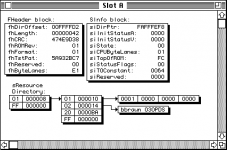Trash80toHP_Mini
NIGHT STALKER
Thanks, tt, I can use that graphic! :approve:
From my perspective the Ultra ATA cable header rows will have to be moved up and away from the SIMM Mounting Tab Holes for clearance there, it looks like you've allowed for connector clearance already. I'll do a cardboard fit prototype to see if the clearances will out work with all the connectors in place. Did you confirm that the outboard ends of the IDE cables will not interfere with snapping in/keeping the SIMM in place?
As I said, I can easily be persuaded to do a Seed project if the price is right, but my way has several advantages.
I don't mind taking the time to do the grunt work of assembly from my normal manual process for layout/fab. Being a blast from the 1989 past, it'll be fun, relaxing and theraputic. The IDC ribbon cable mod and use makes for far less expensive multiple/differential length testing process, start long re-munch for successively shorter lengths. I'll probably start off with the nastiest connection first, three feet of standard, crosstalk inducing, non-alternating ground line ribbon cable, one in four odds on that one.
I give that a 50% chance of working reliably with a cable that places my IIsi SIMM in the space under the FDD. [ ] ]'>
] ]'>
I "know" the project is feasible, down, dirty, fugly, cheap as can be proof, with a side of DeclROM adapter board is almost impossible to resist, from my hacks development program perspective.
p.s. If someone else in the gang wants to adopt this line of research, sans the ROM adapter portion, to Seed the way for the rest of us, it IS a community project! [ ] ]'>
] ]'>
Besides, I can spend the extra money to replace my storage room whirlpooled Drill Press before I move in with my girlfriend. }
From my perspective the Ultra ATA cable header rows will have to be moved up and away from the SIMM Mounting Tab Holes for clearance there, it looks like you've allowed for connector clearance already. I'll do a cardboard fit prototype to see if the clearances will out work with all the connectors in place. Did you confirm that the outboard ends of the IDE cables will not interfere with snapping in/keeping the SIMM in place?
As I said, I can easily be persuaded to do a Seed project if the price is right, but my way has several advantages.
I don't mind taking the time to do the grunt work of assembly from my normal manual process for layout/fab. Being a blast from the 1989 past, it'll be fun, relaxing and theraputic. The IDC ribbon cable mod and use makes for far less expensive multiple/differential length testing process, start long re-munch for successively shorter lengths. I'll probably start off with the nastiest connection first, three feet of standard, crosstalk inducing, non-alternating ground line ribbon cable, one in four odds on that one.
I give that a 50% chance of working reliably with a cable that places my IIsi SIMM in the space under the FDD. [
I "know" the project is feasible, down, dirty, fugly, cheap as can be proof, with a side of DeclROM adapter board is almost impossible to resist, from my hacks development program perspective.
p.s. If someone else in the gang wants to adopt this line of research, sans the ROM adapter portion, to Seed the way for the rest of us, it IS a community project! [
Besides, I can spend the extra money to replace my storage room whirlpooled Drill Press before I move in with my girlfriend. }

